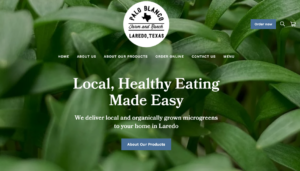A central focus throughout the Biden-Harris Administration has been addressing the issue of racial equity. In January of 2021, the administration issued an executive order on advancing racial equity and support for underserved communities through the federal government citing disparities in laws, public policies, public, and private institutions. In response to the Racial Equity Executive Order, The United States Department of Agriculture has admitted that its programs have a flawed design, and because of that and the discriminatory behaviors of individuals over many decades, it recognizes that there are existing barriers for underserved producers. As organizations begin to navigate the 2023 Farm Bill, research has shown there is a need for equity to continue making changes for Socially Disadvantaged Farmers and Ranchers.
The Socially Disadvantaged Farmers and Ranchers Policy Research Center at Alcorn State University (The Policy Center) has developed several policy recommendations for the 2023 Farm Bill that aim to address the many years of systemic and historic discrimination. These recommendations range from the need to eliminate the use of the term “historically underserved producer” to the elimination of the FSA State and County Committee System, all supported by external research conducted on behalf of the policy center and listening sessions with the farmers and ranchers seeking equitable experiences in agriculture.
Also, at the center of Farm Bill discussions are the 1890 land-grant institutions (the 1890s), historically black universities established under the Second Morrill Act of 1890, that have been historically underfunded. The 1890s were not provided with research and extension funds until 1977, with inequities continuing between 1862 land-grant institutions (1862s) and 1890s since then. In “The Equity in Agricultural Production and Governance” drafted by The Farm Bill Enterprise, it states that NIFA’s 2016 Annual Review Report displayed a stark disparity of AFRI funding, with the 1862s receiving over 82% of the funding, and the 1890s receiving 1.2%. They further discuss that while all states provide 1862s with adequate funds 1890 Institutions, in 10 of the 18 states where they are present, have been continuously underfunded or receive no funding. While the direction of the 2023 Farm Bill is uncertain, there is still hope for equitable spaces to be carved out in agriculture.

Author: April Love
Policy Analyst and Attorney
Alcorn State University











